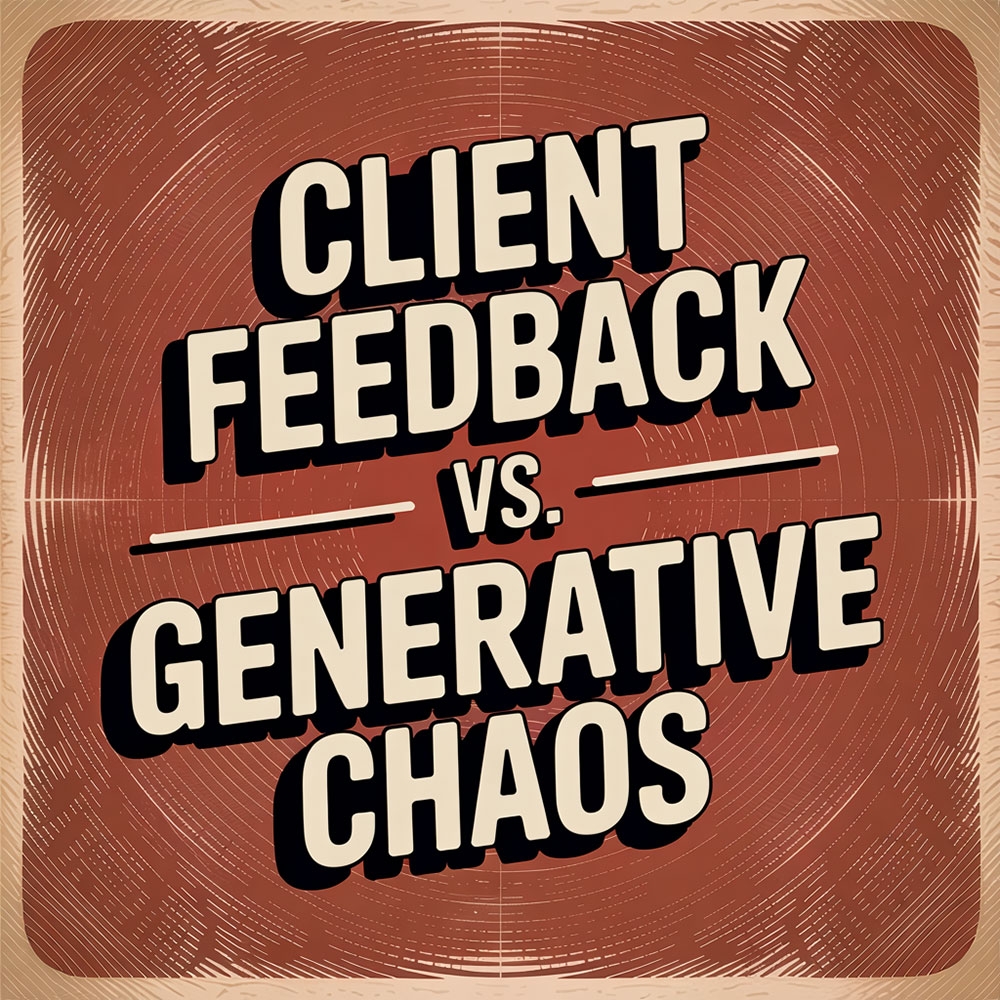AI Can Generate It, But I Make It Work

Why AI Still Needs a Human (a.k.a. Me)
Generative AI has burst onto the creative scene like the flashiest new intern - lightning-fast, eye-catching, and always ready to whip up a “Ghibli-style cat riding a bicycle” at a moment’s notice. And sure, that’s fun. But for anyone working in the real-world trenches of creative production, especially when clients are involved, the shine wears off the moment someone says: “Can we just tweak a few things?”
Because here’s the truth: while AI can generate visuals in seconds, getting it to deliver a very specific visual outcome is still a bit like herding cats - unpredictable, occasionally surreal, and rarely repeatable.
The Real-World Gap
In theory, AI offers a magic wand. Type your idea, hit generate, and out pops a ready-made image. In practice? Not quite. When a brief demands nuance, restraint, or brand consistency, AI can start to unravel. Even though tools like ChatGPT now let you edit specific parts of an image - swapping backgrounds, adjusting clothing, even inpainting with decent control - the process is still far from seamless. You might change one detail, only for another to subtly shift or break. That red scarf the client wants? Easy to add - but now the cat’s eyes look different and the lighting’s changed.
And tools like Midjourney are improving, but they still don’t offer the kind of layered, editable outputs creative teams rely on. There’s no version history, no easy rollback, and no real concept of visual consistency across images. You’re left regenerating, tweaking, regenerating again - which is fine in early stages, but quickly becomes a time sink when precision is needed.
And that’s the crux of it: there’s a gap between what AI can currently do and what creative work actually demands.
Where the Human Element Comes In
This is where experience makes the difference.
Clients come to me with a concept - sometimes tight, sometimes open-ended - and it’s my job to turn that into a finished piece of visual content. These days, AI is part of that process. But without someone steering the creative direction, refining prompts, iterating intelligently, and manually correcting what AI can’t get right, you’re left with something that might look impressive but isn’t actually usable.
Think of AI as a powerful but literal assistant. It needs precise instructions, and even then, it’s prone to wandering. It doesn’t understand nuance. It doesn’t anticipate feedback. It doesn’t know how to interpret phrases like “more energy,” “cleaner lines,” or “more zhuzh.”
I take abstract ideas and translate them into clear creative direction - not just with words, but with intent. I know when to lean into AI’s strengths and when to bypass them. I can build a prompt that balances tone and detail, iterate until the composition sings, and then polish the result with the kind of finesse only years of hands-on craft, design and animation work can bring.
When AI gets it 80% there, I’m the one who takes it across the line.
Not Anti-AI - Just Pro Results
Let’s be clear: I use AI. I love what it makes possible. But I treat it as part of the process - not the whole process. On the right project, it can shave days off ideation and open creative doors that would’ve stayed shut. But when it comes to delivering something precise, on-brand, and ready for client sign-off? That still requires a human - someone who can interpret feedback, manage change, and shape raw generation into real creative output.
Because here’s the thing: AI might give you 100 options, but it won’t tell you which one fits. It won’t sense when something feels off. It won’t push back when the brief starts to drift, or suggest a smarter, cleaner approach. That takes judgment. Taste. Experience. Someone who knows the tools inside out and still knows when to close them and take a different path.
Final Thoughts
The tools are powerful - but they’re not magic. Not yet. They still need someone at the helm who knows how to translate human ideas into visual results. Someone who can wrestle ambiguity, feedback, and technology into something beautifully finished.
That’s where I come in. I bring the creative insight, the technical skill, and the ability to work with (and around) AI to deliver content that’s fast, flexible, and most importantly - fit for purpose.
Because no matter how smart the tools get, creativity was never about the tech. It’s about the people using it.